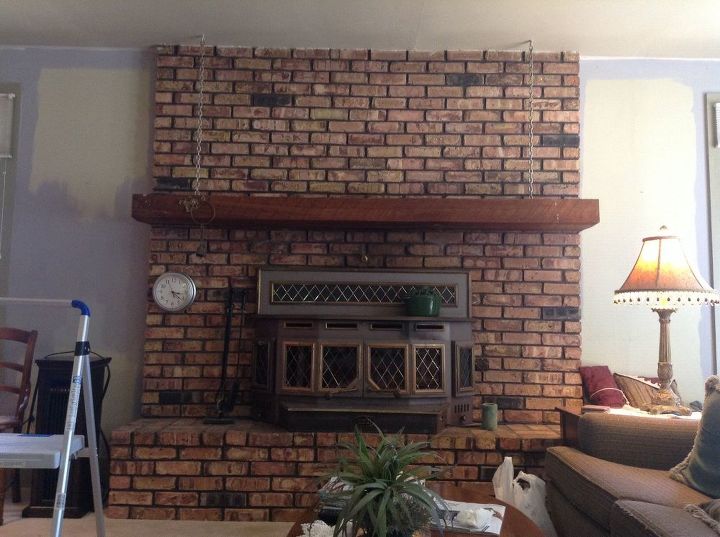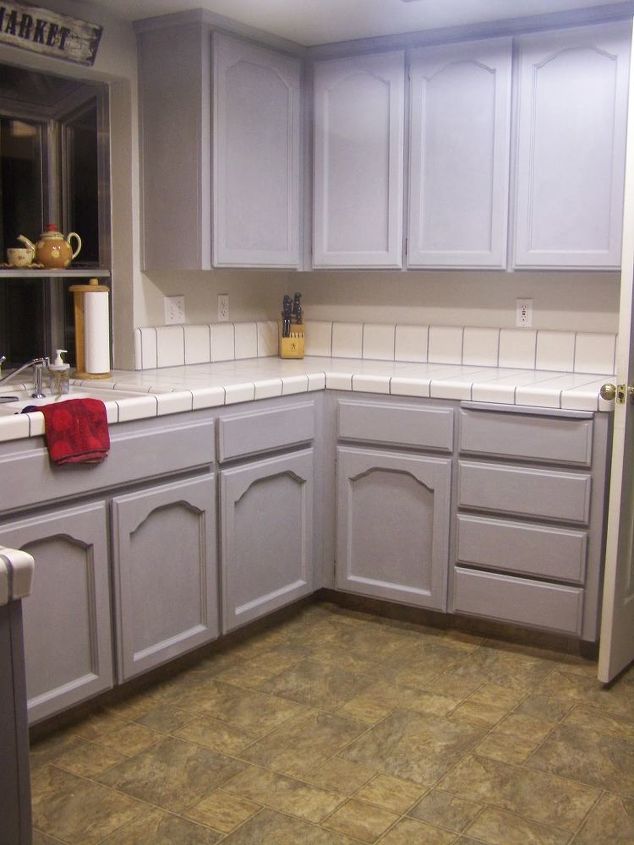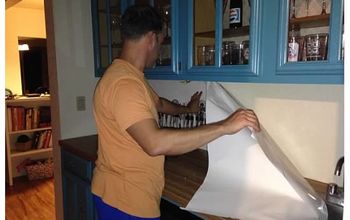When painting a old night stand or end table do I have to remove stain

-
I don't know the answer but would like to also. What kind of paint are you using? Latex, the new chalk paint? I think that makes a difference from what I have read before
 Wendy Johnson
on Sep 06, 2014
Helpful Reply
Wendy Johnson
on Sep 06, 2014
Helpful Reply -
-
A light sanding will work if it's wood. Just rough it up and paint will stick. Remember it takes 30 days to cure don't stick anything in top until then.
 Sherrie
on Sep 06, 2014
Helpful Reply
Sherrie
on Sep 06, 2014
Helpful Reply -
-
Sherrie is correct. A good cleaning first to remove any past wax or polish is suggested. If you fail to do this you risk sanding the waxy material into the wood. This makes it more difficult for any new paint finish to bite into the surface. This is why you see these little fish eyes in the paint. Once cleaned a good sanding followed by using a tack cloth to remove any dust, prime the table and follow by the paint your looking to use. Its a easy and fun project. Try to paint in the shade and put the piece in the sun to help speed up the drying process.
 Woodbridge Environmental Tiptophouse.com
on Sep 07, 2014
Helpful Reply
Woodbridge Environmental Tiptophouse.com
on Sep 07, 2014
Helpful Reply -
-
If the previous finish is in relatively good shape, you do not even have to sand. You can use a "liquid sandpaper" product, also known as "deglosser." You can find it any place that sells paint. Some people finding sanding therapeutic but I hate sanding, particularly pieces with a lot of detail, so I always use the liquid sandpaper on all my painted pieces. It's quick, easy and works great. I've painted in excess of 30 pieces of furniture for my previous and current homes, as well as for my daughter, and I've never had a problem using the liquid sandpaper in place of sanding. A good wipe down with it will clean the piece and leave some "tooth" for the paint to grip to. After the liquid sandpaper step, I use a couple thin coats of a good bonding primer. Unless you are using chalk paint or milk paint, don't skip the primer step. In addition to helping with paint adhesion, primer helps fill in any little nooks and crannies or surface imperfections and provides a nice smooth surface to paint on. After the primer has dried well, I use several light coats of latex interior paint (however many coats it takes to get good, even coverage). If you are using latex paint, as Sherrie said, it does take a while to fully cure, depending on weather conditions . Multiple, thin coats will dry faster/harder than one or two thick coats. You can use the furniture before it has cured; just be careful setting anything on table tops until you are sure the paint has sufficiently hardened.
 Shari
on Sep 07, 2014
Helpful Reply
Shari
on Sep 07, 2014
Helpful Reply -
-
Shari, I am not a big fan of the de-glosser. These products were developed as an addition to using sand paper. The reason was is to provide a method of getting into tiny groves and spaces that proved to difficult for the sand paper to get to. Not as an alternative to sanding. Although many have had success using this for that reason. Its not what is was designed to do.
 Woodbridge Environmental Tiptophouse.com
on Sep 07, 2014
Helpful Reply
Woodbridge Environmental Tiptophouse.com
on Sep 07, 2014
Helpful Reply -
Related Discussions
Should I paint or stain my oak kitchen cabinets?
I was wondering if you could help me with something -- I have an entirely oak kitchen. I know it's the rage now to paint or gel stain cabinets. I've been considering ... See more
How to paint a metal front door?
How do I paint my front door? It's metal.
How to paint grout?
How do I paint grout to change the color? The grout is in great shape, but the color - meh.
How to whitewash a brick fireplace?
What is the best method to whitewash bricks surrounding a fireplace?
Should I re-stain or paint my cabinets?
Edit:””” 3 years later😂 I decided to paint them white and I am so very pleased with the results!We bought a new house with these ugly cabinets. I really cann... See more
Stripping off A LOT of chalk paint
I've had my first (of many, I'm sure) disastrous DIY project. I have covered my entire kitchen cabinetry with chalk paint and I hate it. It's streaky, it's cracking, ... See more




